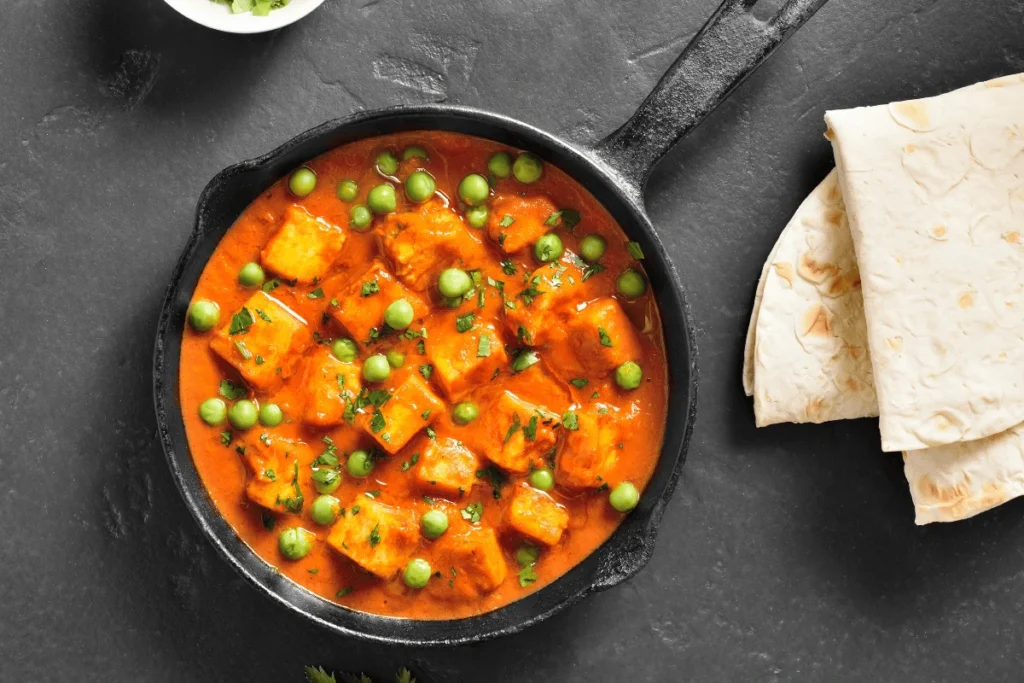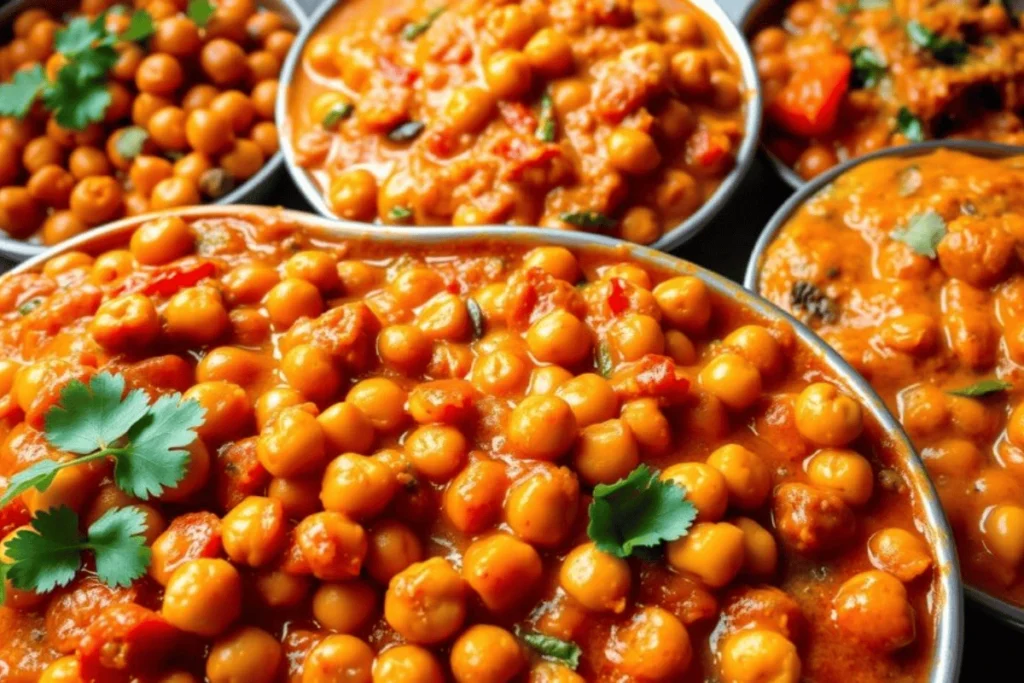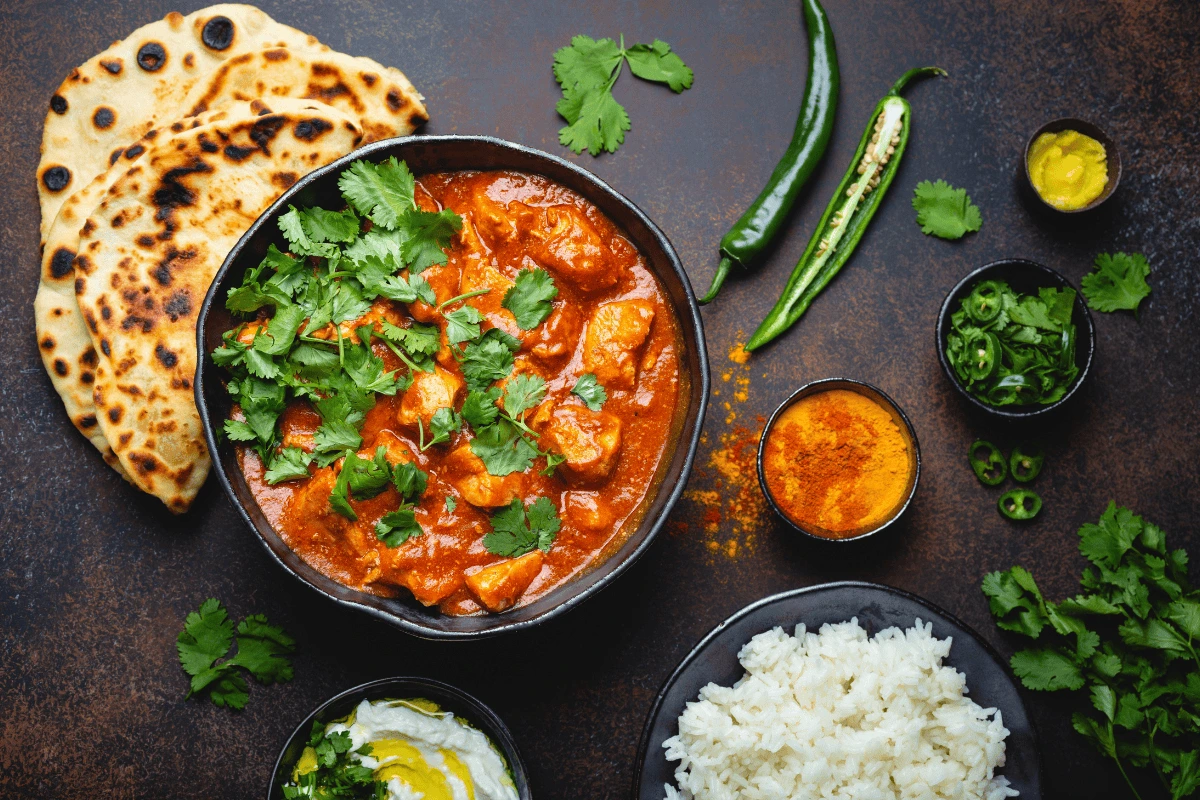Experience the aroma of sizzling pan-roasted turmeric and cumin, as variations of chickpea curry transport you to Hyderabad’s kitchens and Mumbai’s markets. Chana masala adapts to its surroundings, reflecting soil, history, and tradition.
Every spoonful of Kerala’s coconut-forward curries and Rajasthan’s rich spice combinations tells a story. This journey tries to discover how geography influences flavor. Imagine your next meal resembling Maharashtra’s desert winds or Karnataka’s monsoon rains.
Table of Contents
Key Takeaways
- Regional chana masala reflects local flavors and ingredients.
- North Indian dishes may include yogurt or cream for extra richness.
- Coconut milk defines South Indian food, including Kerala curry.
- Spice levels and fragrances vary widely by state.
- Changing these dishes allows you to sample the gastronomic diversity of India right here.
Understanding the Diverse World of Chana Masala
Chana masala by region reveals a story of tradition and evolution. It is based on India’s rich gastronomic legacy but has evolved to incorporate regional dishes and rituals. From family meals to street vendors, it connects people across generations and geographies.
The cultural significance of chickpea curry in Indian cooking
Chana masala is both a culinary and cultural treasure. It is traditionally provided at weddings in Punjab. During the festivals in Gujarat, people consume flatbreads. Its simplicity makes it suitable for both everyday dinners and huge celebrations.
How Does Geography Shape Taste Profiles?
What grows in a given place determines its food supply. In dry places like Rajasthan, chana masala is flavored with dried red chilies and ghee. In Kerala, along the seaside, it is prepared with fresh curry leaves and coconut milk. This demonstrates how nature influences our taste.
Key Base Ingredients and Variations
- Chickpeas are the major ingredient and are cooked till tender.
- Onions and tomatoes serve as the base for all spice mixes.
- Coriander and cumin are basic spices in every recipe.
These key components remain the same, allowing chefs to experiment with diverse flavors while keeping the cuisine’s purity.
North Indian Variations of Chickpea Curry
Making North Indian chickpea curry opens up a world of flavors. Variations of Chickpea Curry, like Punjabi chana masala, are defined by its rich tomato base and excellent spice blend. Slow-cooked onions, which turn golden-yellow, are combined with cinnamon and cloves.

A well-cooked chana masala should have a balanced flavor of sweet, sour, and spicy ingredients.
Variations of Chickpea Curry bring unique regional twists. In Punjab, garam masala adds warmth, while amchur provides tang. Tea bags help soften chickpeas faster—a secret trick! Uttar Pradesh favors fresh ginger for zest, while Delhi’s street food amps up the heat with extra chili. Kashmiri versions include dried apricots or almonds for a sweet-heat contrast.
- Punjabi: garam masala and amchur in a creamy tomato base.
- Delhi: Spicy with extra red chilies and toasted cumin.
- Kashmir: Sweet-savory balance with nuts or dried fruit.
Choosing the right spices is key to mastering this cuisine. Adjust garam masala to suit your taste. Variations of Chickpea Curry let you explore—keep chickpeas whole for Punjabi chana masala or try regional twists. Each bite brings a taste of India’s rich flavors.
South Indian Interpretations of Chana Masala
South Indian chana masala is rich in local spices and ingredients. This distinguishes the curries from those in the north. This difference is reflected in the varied textures and scents of rural and coastal cuisine.
Kerala-Style Chickpea Curry with Coconut Milk
Boiling chickpeas in coconut milk creates this creamy variation. The addition of ground coconut thickens the dish. Mustard seeds and curry leaves are first fried in coconut oil and then mashed together.
The ultimate result is a light and fragrant curry. It pairs well with appam, also known as avalakki or puff rice.
The Tangy Variations from Tamil Nadu
In Tamil Nadu, tamarind adds a tang to chana masala. Split pigeon peas and dried red chilies are added. Split urad dal and asafoetida give depth.
Fresh curry and fenugreek leaves balance the acidic broth.
The Spicy Method of Andhra Pradesh
The Andhra variants also have extra spices. Roasted red chilis with garlic and ginger add heat. Mustard seeds, urad dal, and dried mango powder (amchur) combine to form a flavor layer.
Dagad phool, a crushed mineral stone, provides a distinct flavor that is a hallmark of Andhra cuisine.
These south indian chana masala designs, created at home, are straightforward. Yogurt can be used instead of coconut milk in Kerala. Alternatively, adjust the chili quantities to taste. Each area’s technique demonstrates how one meal can evolve over 1,000 kilometers of hills and sea.

Special Ingredients to Improve Your Variations of Chickpea Curry
Indian street food vendors use odd ingredients to make their chickpea curry stand out. These will provide depth or a surprise twist to your chana masala.
- Pomegranate seeds are popular in Gujarati curries for their color and sourness. They also provide a tangy bite.
- Fenugreek leaves—kasiri methi—are commonly used in Punjabi and Rajasthani curries and impart an earthy flavor to them.
- Tamarind adds a sour dimension to South Indian cuisine that balances out the flavors.
- Jaggery, which is used in Maharashtra curries, is a subtle sweetener that balances the heat with a caramel flavor.
Modern vegan additions include tamari in chana masala for a gluten-free soy sauce flavor. Coastal areas produce grated coconut or coconut milk. Andhra cooks use raw papaya for texture. These items reflect regional cuisine and cooking traditions.
Tamarinds thrive in warm regions, while pomegranates need drier conditions. A pinch of roasted cumin or a squeeze of lime enhances flavor. Variations of Chickpea Curry let you experiment—try coconut milk for creaminess or mustard seeds for crunch. Small tweaks create a unique, flavorful dish.
Finally, modify regional variations for your kitchen.
Investigating numerous chana masala recipes is like embarking on a culinary adventure. Begin with a basic chickpea, onion, tomato, and spice mixture with cumin or coriander. Once you’ve gotten the hang of it, experiment with regional variants. Variations of Chickpea Curry allow for endless creativity—try a South Indian version with curry leaves and mustard seeds or a Mediterranean twist with olives and feta.
To give the dish a Punjabi flavor, add fresh cilantro and garam spices. If you run out of coconut milk, add a velvety touch with almond milk. Small changes, such as red chili flakes for heat or pomegranate seeds for a tart flavor, can have a big influence.
If you can’t find every ingredient, don’t worry. Store-bought chana masala mixtures and dried curry leaves would suffice. Change the seasonings to your liking, and then explore plant-based alternatives like cashew cream instead of yogurt. This meal is all about customizing it for you.
Chana masala recipes remind us that food connects us to numerous civilizations. Variations of Chickpea Curry allow you to add your own twist: lemon juice for brightness, roasted spices for depth, or even a smoky flavor with charred tomatoes. Share your creations and witness how the dinner evolves with each new change. The best curries are those that are unique to you while still respecting their origin.
FAQs
Are there any regional variants of chana masala?
The recipe for chana masala varies throughout India. Like Punjab, North India has wonderful tomato gravy. South India uses curry leaves and coconut milk to lighten the gravy. Variations of Chickpea Curry are special because they use locally grown spices and ingredients, adapting to regional flavors and cooking traditions.
How can I make an authentic Punjabi chana masala at home?
Begin real Punjabi chana masala with golden fried onions. Add tomatoes, ginger, garlic, and spices such as garam masala and red chili powder. Use amchur to give it a tangy flavor; boil until the flavors combine. For optimal texture, use kabuli chana; sprinkle with coriander leaves as garnish.
Which unusual items might one add to chana masala?
Particularly in Southern cuisine, you might try adding pomegranate seeds for a tart taste or tamarind for a sour kick. Great modern tweaks for your chickpea curry are dried fenugreek leaves, coconut, and tamari.
How might street food affect masala recipes for chana?
Using strong spices and unusual ingredients, street food vendors create chana masala. Their dishes could have strong tastes or unique twists depending on regional preferences. This offers patrons a unique gastronomic encounter.
Does my diet improve health-wise from adding chickpeas?
Indeed, chickpeas are quite healthy. They abound in vitamins and minerals, fiber, and protein as well. Thanks to its complex carbohydrates, eating chickpea curry can improve digestion, help control weight, and provide you energy. Variations of Chickpea Curry include adding coconut milk for a creamy texture, incorporating spinach for extra nutrients, or spicing it up with different regional flavors like Indian, Moroccan, or Thai-inspired seasonings.

